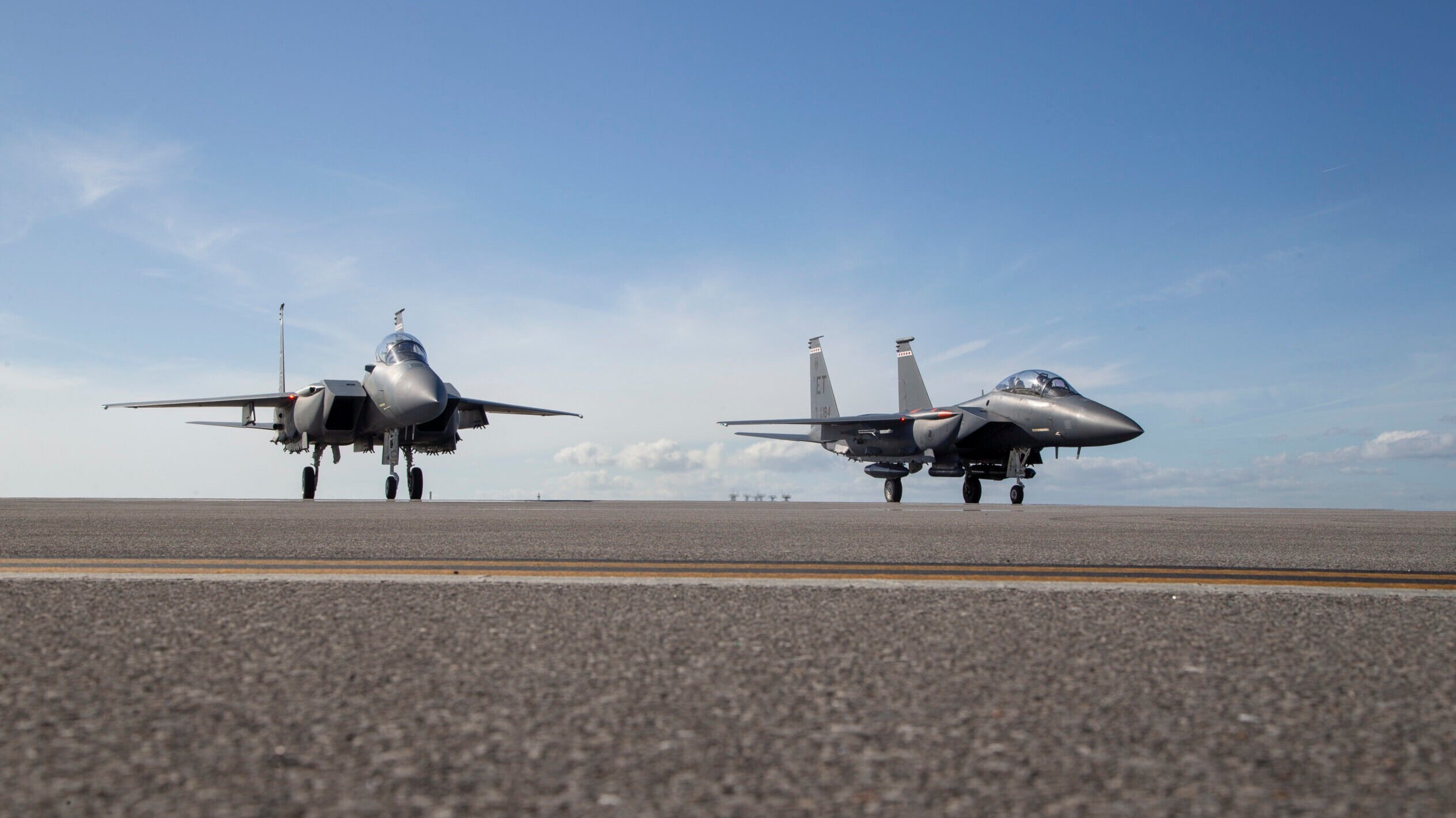
The first F-15EX parks next to a F-15E Strike Eagle on the ramp at Eglin Air Force Base, Fla., after delivery 11 March, 2021. (U.S. Air Force photo by Staff Sgt. Joshua Hoskins)
WASHINGTON — A new electronic warfare kit for the Boeing F-15 fighter jet incurred its second “significant” cost breach due to a decision to slash its procurement, according to a new Defense Department report.
The breach was triggered specifically by the Air Force’s decision to cut its planned purchase of Eagle Passive Active Warning Survivability System (EPAWSS) kits from 217 to just 99 to go on F-15E fighter jets, matching a planned downsizing of the fleet. That 118-kit reduction resulted in what’s known as a Nunn-McCurdy breach, as the per-unit cost of the kits jumped since their overall price, including R&D, will be spread over fewer units. The Air Force further plans to use the kits on the newer F-15EX, but the service reduced that buy as well from 144 to 104 jets, which the Pentagon report says also drove the EPAWSS acquisition unit cost growth.
That cost growth — 39 percent over the program’s baseline estimate — caused a “significant” breach, which applies when costs jump over 30 percent. A significant breach requires congressional notification. A “critical” breach of 50 percent cost growth or more over a baseline requires a program’s termination absent certification from the Defense Secretary.
In all, the selected acquisition report (SAR) [PDF], published last week, says the Air Force now plans to buy a total of 206 of the EPAWSS kits for the F-15E and the F-15EX, which includes three for developmental aircraft that will not be upgraded to a final production configuration.
An Air Force spokesperson told Breaking Defense that “the FY24 President’s Budget aligns EPAWSS to an optimized F-15 modernization plan and procurement of new F-15EX aircraft equipped with the EPAWSS capability.”
RELATED: Indonesia commits to buying ‘up to 24’ F-15EXs from Boeing
EPAWSS manufacturer BAE Systems referred questions about the cost breach to the Air Force, but said in a statement, “The EPAWSS program was renegotiated in 2020 to mitigate cost growth. The system is performing well and we are continuing to progress on the program.”
It’s not unusual for truncated programs to result in cost breaches. For example, when the Air Force decreased its buy of the HH-60W Combat Rescue Helicopter, that effort experienced a “significant” Nunn-McCurdy breach.
It’s also not the first time this has happened for EPAWSS. In an FY18 SAR, the EPAWSS program reported a similar Nunn-McCurdy breach after a decision to cut its procurement.
Breach or no, the EPAWSS program remains mostly on track. Though its initial operational capability date was delayed by four months to August 2025, its “critical technologies are mature and its design is stable,” the Government Accountability Office reported in June [PDF].
Australia tops up Ukraine military aid with $100M
Australia has already supplied Ukraine with 120 Bushmaster vehicles, six 155mm howitzers, 56 M113 armored vehicles, 14 special operations vehicles and its signature cardboard drones.


























